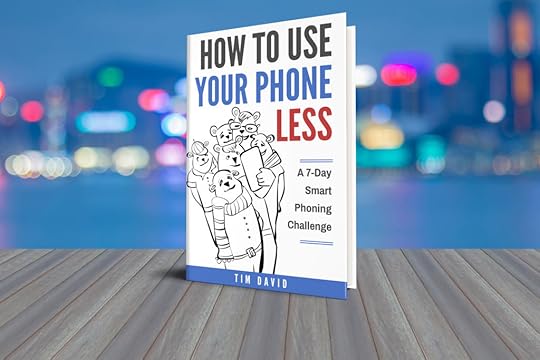Tim David's Blog
May 3, 2019
5 Steps When Stepping into a New Leadership Role – Guest Article by Sarah Dionne
 As the new kid on the block in a work or internship environment, at times, we can feel less than accepted – especially if we are taking on a leadership role. This can also be prominent when a coworker steps into a management position, which can be a hard transition.
As the new kid on the block in a work or internship environment, at times, we can feel less than accepted – especially if we are taking on a leadership role. This can also be prominent when a coworker steps into a management position, which can be a hard transition.
I recall being an intern as a school counselor at a kindergarten. My role at that time was to identify kiddos that seemed like they needed some extra support, consult with their families, meet with children during school hours and work with teachers to find ways to integrate useful behavioral strategies into the classroom. I can tell you that, at first, this did not go over well…at all. I was the new kid on the block and the teachers, who had been working hard for those students day in and day out, felt their toes being stepped on. I met a lot of resistance. Frequently teachers chose not to refer kiddos to me even if problems were presenting.
Why? Not because they were ignorant or misguided. It was because of a natural resistance many of us have to new input or new influence. A defense mechanism, if you will.
This same situation could be applied in nearly any work environment; stepping into a management role as an “outsider”, becoming the new resident doctor on a medical team, moving up from co-worker to shift supervisor. Once in this new role, perhaps you find team members less than helpful or even dismissive. Perhaps they do not seek your help when appropriate but that of a trusted co-worker or circumvent your position and speak to someone “above” you. All of this can feel frustrating and confusing.
Here are five methods to help manage this type of situation. These strategies changed my own perspective as an intern, enabled me to engage school faculty and, eventually, the teachers who were previously most resistant were open to my support and referring kiddos for services. I continue to use these strategies as my role as a psychotherapist within an agency. Lets face it. Work relationships can be bumpy at times. Having tools to keep them as smooth and collaborative as possible will only amplify your ability to be effective.
1. Don’t Take it Personally!
The very first strategy is to refrain from personalizing other’s behaviors. Assuming that you are acting in a respectful and professional manor, if team members are resistant to you than, in all likelihood, it’s not you. There could be innumerable factors causing him to experience resistance ranging from discomfort with change to missing the previous supervisor with whom he felt connected. Step back. Take a breath. It’s not personal.
2. Always, Always, ALWAYS Come from a Place of Loving Kindness
If your team’s defenses are up, becoming irritated with them will only solidify their resistance. How to melt resistance is through kindness. People love to hear about the good things they did or are doing. People love to see a smile and hear a pleasant “how are you?”. However, the key to loving kindness is this: authenticity. In order to be authentically kind to people who may not always be kind to you is to realize that their behavior isn’t personal (ah…and the strategies build.)
3. Ask for Help
For me, this was one of the most powerful methods of breaking down resistance and can also align with delegation. Just because you are in a supervisory role does not mean that you need to know everything. You do not need to prove yourself to anyone. After all, you are now in a leadership role because you currently possess the abilities to master the position. The proof will be in the pudding as you effectively manage your responsibilities. Because there is nothing to prove, this means that asking team members for help does not create an appearance of incompetence. Rather, it creates an environment of collaboration.
Returning to my time as a social work intern, I begin to ask the most resistant teachers for help. I asked for their opinions on how to best appeal to parents and for their insights into the kids’ troubling behaviors. Any time I sent an email to a faculty member that identified concerns or a plan of action I included at the end, “any thoughts?”. Whenever possible, I would use their contributions and thank them for all their help. After some time, attention and effort all of the teachers were referring kiddos to my services and some even invited me into their classrooms for observation or support.
4. Acknowledge Your Mistakes and Apologize
By this, I do not mean begging for forgiveness or being overly apologetic. All too often, team members have their shortcomings pointed out or corrected, however, the “boss” may not point out her own when applicable. This creates the appearance that the supervisor may see herself as “perfect”, and your employees will not respond well to this. They want someone who is on their side, who gets that she is not perfect either and is willing to step up. If a mistake was made and it had been your responsibility, graciously say, “hey, that was my bad, this is how I’m fixing it. Apologies.” Short, sweet, but accountable.
5. Maintain Connection With Your Team Members
Swing by, say “Hi.” If you work in an office, take a minute to stop in to see each individual while being sure to use the employee’s name. This does not have to be a sit down chat, just a pop in, “Hey, just saying good morning, John”. If your team is feeling resistant to you this means there is also a disconnect or distance in the professional relationship. Effort needs to be made to close the gap. Why use the employee’s name? You might guess because it shows you actually know his name while also personalizing your good morning. While this is definitely is true, that’s not the primary reason.
We love to hear our names. When parenting infants and young children it’s encouraged to say the child’s name in positive ways, “Jenny, you are so good at that” or “you’re so funny, Bobby”. A child identifies the name as himself and, therefore, when he hears it in a positive way, he feels like he is valued and worthy. And guess what, subconsciously, it still matters to us as adults. When we hear our names used in positive or gracious ways it builds on an internal sense worth. Your employees and coworkers will unconsciously feel more valued, an essential component to an effective work environment.
What to Do When it Doesn’t Work
An important point to mention is that not all people will respond positively no matter what you do. It is profoundly important to avoid demonizing resistant employees and to manage any resentment you have toward them. If a coworker overhears you negatively speaking about another coworker this is going to immediately incite distrust. “If he can talk that way about her, then what about me.” Furthermore, resentment can create unconscious favoritism and can be divisive in a team environment.
So, how do you manage the employee that simply won’t warm up to you? Return to the first strategy and repeat. If you are continuing to create a united work environment, regardless of singular resistance, it will minimize any disruption his or her negativity might create.
One final note… enjoy your new role. You’ve worked hard. You’ve earned it. Anyone who has yet to understand that will in time. And congratulations.
Sarah Dionne is a psychotherapist and life coach, she specializes in anxiety, body image, eating disorders and trauma. If you’re interested in working with Sarah visit her website to schedule a Free Consultation: www.sarahdionnelicsw.org
The post 5 Steps When Stepping into a New Leadership Role – Guest Article by Sarah Dionne appeared first on GoodAtPeople.com.
December 16, 2018
The Absolute BEST Way to Make Hard Decisions
Influential people are decisive. They make decisions quickly and they change them slowly.
The video above walks you through a six-step process that I used to choose a new cover design for my book, FLIP: The Four Levels of Influencing People. But fast decision-making applies to every area of our lives.
A parent who is clear and firm (with love) has more influence over their child’s behavior than an indecisive parent who lacks consistency. A top executive who makes decisions quickly and changes them slowly will inspire their team to action. An indecisive leader who is always changing directions won’t inspire confidence in anyone. An entrepreneur who makes decisions well and sticks to them will be more successful than an entrepreneur who chases every shiny object that comes along.
Fast decisions are clearly important for success in this world, but how can we be certain we’ve made the right one? Especially when we feel stuck between a rock and a hard place. Brain science to the rescue! I use a six-part thinking method that taps into the amazing decision-making ability of the human brain – even when people disagree.
IBM says this cut the time they spent in meetings by 75%. In one experiment, this method increased thinking productivity in groups by 493%. (Source: Edward de Bono, Six Thinking Hats)
1. Planning (Blue hat)
First you’ve got to think about what you’ll be thinking about. What is the decision that needs to be made? Who needs to be involved? (Do they really need to be involved in this meeting or is it just some ridiculous “positional requirement”?) How much time do you have to make this decision?
If you’re making a decision as a group, then one of you needs to continue using this type of meta-thinking. We’ll call this person the facilitator. The facilitator keeps everyone else on point throughout the entire process.
2. Facts (White hat)
Now it’s time to look at what you know. Lay all the facts out on the table. This is not the time for opinions or interpretations. Try to remain neutral here. Just the facts, Ma’am.
Facts can vary in degree from absolutely certain to not yet fully checked. Get in the habit of checking facts with a simple, “Are we SURE about that?” Some “facts” might turn out to just be assumptions.
3. Pros (Yellow hat)
This is where you identify the positives of the decision in both present AND future tense. For example, if you were using this method to decide whether or not to hire someone, you’d look at the present (What are this applicant’s BEST qualities?) AND the future (What are all the great things that will happen if we hire this person?)
So if I were to compare this to a SWOT analysis, then this step would encompass not just the ‘S – Strengths,’ but also the ‘O – Opportunities’. The ‘W’ and ‘T’ are saved for the next step.
4. Cons (Black hat)
Okay all you Negative Nelly’s and Debbie Downers, it’s your time to shine! What are the “Weaknesses” and potential “Threats” (Re: The ‘W’ and ‘T’ taken from the SWOT analysis mentioned above) for a given decision? This is the time to slow down and be cautious about moving forward. Keep your critical thinking skills handy.
It’s great to be positive, but effective decisions can’t be made if you only look at one side of the coin. By looking at pros AND cons, you force both optimists and pessimists to see and value each others’ opinions.
I like doing a “pre-mortem” for this step. To do that, I imagine that I’ve time-traveled to the future where I see that my decision turns out to be a disaster. I make it very real in my mind. Then I ask myself, “What made it all go wrong?” It’s amazing the cracks that a pre-mortem will help you to discover.
5. Feelings (Red hat)
“What is your gut telling you?” is a question that isn’t asked nearly enough. When doing this type of thinking, don’t ever try to justify or judge your emotions, just let them flow. Often times, that gut feeling is our brain’s way of warning us against a bad decision, or perhaps pushing us toward something beneficial.
Don’t ignore your feelings, but don’t put too much stock in them either. Remember, each of these steps is only one sixth of the entire decision-making equation.
6. Brainstorm (Green hat)
There are times when you’ll go through all five steps and still not have a solid decision. Perhaps the right option for you hasn’t been discovered yet. Maybe you were trying to decide between “A” and “B” when “C” would have been better than both of them.
There has been a lot written about brainstorming and lateral thinking. One of the keys to doing this effectively is to focus on the quantity of ideas and not the quality. Don’t filter any ideas, don’t dismiss any ideas, and don’t judge any ideas. You can do all that later. Another key for great creative input is to use prompting tools. Something like Rory’s Story Cubes is a great example of a prompting tool. You can also write random words on a stack of index cards, shuffle them all together, and then draw cards one at a time as prompts.
The idea is to generate some kind of prompt at random, and then see where the prompt takes your thoughts! You’d be surprised at how insight can come from the strangest places.
Wrapping it all up
By doing these six steps, not only have you factored in everyone’s opinions and perspectives and given everyone a voice, but you also challenged yourself to think about the decision from every possible angle. Whatever decision you make will be firm in your mind and you will be MUCH less likely to experience any kind of regret.
While no one can predict the future and things may still go wrong, at least you’ll be able to confidently say. “I made the best decision with the information I had at the time.” And what more can you ask for than that?
Here is the final version of the cover I chose:
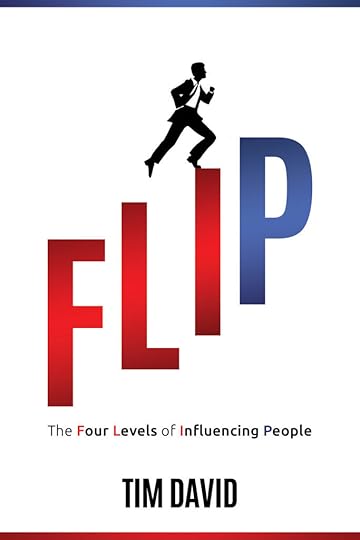
What do you think?
Comment below with a tough decision (personally or professionally) that you’ll use the six thinking hats on.
The post The Absolute BEST Way to Make Hard Decisions appeared first on GoodAtPeople.com.
November 20, 2018
Is Social Media Dying?

Last month, Facebook, Twitter, and Snap Inc. each reported either slowing or stalled user growth. Even the mighty Facebook’s stock is now down 19 dollars a share from where it was on November 7th.
Is this the beginning of the end for social media? If so, why?
1. The Diversification Reason
Remember when there were only three channels on TV?
ABC, CBS, and NBC ruled the landscape. When their market domination began to erode in the late 1980’s, it wasn’t because television was dying. It was because there were finally more than just a handful of channels to choose from.
Maybe social media isn’t dying. Maybe it’s just diversifying.
So, I dove into some recent research conducted by Pew Research Center.
As expected, SOME social media platforms are growing while others are stagnant or dropping. Punch in different age groups or demographics and the graph results shift around drastically again.
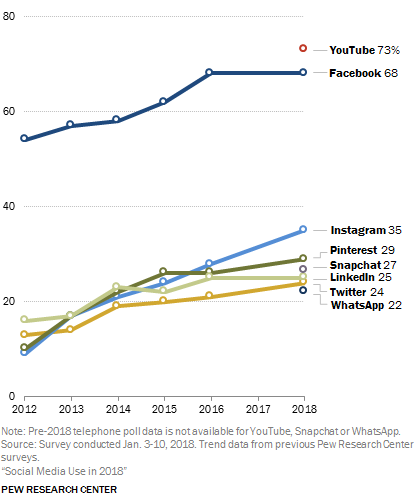
Sometimes, even hard numbers can’t give you a straight answer.
2. The Saturation Reason
Facebook already has 2 billion users, worldwide. I mean, how much more can it grow?
Considering that a good percentage of the world’s population is still unplugged from the Internet (44.9%), I’d say it can grow quite a bit.
Global Internet Access Heat Chart – June 2018:

All the green on that map is pure possibility. Throw in the current rate of population growth and that gives social media a significant number of potential users who haven’t even been born yet.
It’s too early to tell if market saturation is responsible for social media’s growth plateau.
3. The Maturation Reason
Maybe people are just sick of the fake news, narcissism, FOMO feelings, privacy scandals, swarms of ads, and the endless swiping of the social media world. Maybe people have finally grown beyond a sweet tooth for the junk food of the Internet.
Nah…
Social media is here to stay just like McDonald’s and Coca-Cola and Philip Morris are all here to stay. Healthy and unhealthy have never been the primary drivers of behavior for the masses.
4. The REAL Reason
Surveys can’t give us the answer because people say one thing but do another. A quote from the Pew survey referenced earlier highlights a good example of that conflict.
“The share of social media users who say these platforms would be hard to give up has increased by 12 percentage points compared with a survey conducted in early 2014. But by the same token, a majority of users (59%) say it would not be hard to stop using these sites, including 29% who say it would not be hard at all to give up social media.” – Pew Research Center, Social Media Use in 2018
Another survey conducted by the folks who put out the app, Moment ousts the “say one thing, but do another” contradiction.
“Those who said they were ‘happy’ on Facebook spent an average of 20 minutes daily on the social network, compared with 43 minutes average daily use for those who said they were ‘unhappy’ with their experience on Facebook.” – Survey conducted by Moment
You’re “unhappy” with Facebook, yet you’re spending more than twice as much time on the site?
Sometimes we don’t have to read between the lines. Sometimes people even admit it outright…
63% of respondents said they’re trying to limit their smartphone usage. About half admitted that they’ve failed. – Deloitte 2018 Global Mobile Consumer Survey
Here’s what I believe.
When social media was new and trendy, people were happy to say they spent hours and hours on MySpace. Now, people are embarrassed by their social media usage.
We simply can’t help ourselves.
Dr. David Greenfield developed this Smartphone Compulsion Test and so far, 41% of the people I’ve surveyed qualify for a psychiatric evaluation by an addiction specialist.
What about you? You can take the test by clicking the link below. Should only take about 4 minutes to complete.
Click here to take the test: http://goodatpeople.com/blog/smartphone-compulsion-test/
If you’re ready to get serious and SUCCESSFULLY limit your phone use and maximize the amount of LIVING you do, then run (don’t walk) over to www.HowToUseYourPhoneLess.com for an entirely new approach.
The post Is Social Media Dying? appeared first on GoodAtPeople.com.
Smartphone Compulsion Test
The post Smartphone Compulsion Test appeared first on GoodAtPeople.com.
June 8, 2018
It’s NOT About Being Good at What You Do…
The post It’s NOT About Being Good at What You Do… appeared first on GoodAtPeople.com.
June 6, 2018
4 Strange Ways to Reclaim Your Day (and Your Happiness) from Technology
 Sometimes, parents just don’t understand.
Sometimes, parents just don’t understand.
For generations, parents have feared that the latest and greatest gadgets would fry their kids’ brains, ruin their work ethic, or destroy their tiny, fragile moral compasses. Just pick any point in history. Radio, television, video games, and even books have all been accused of corrupting the youth.
I mean…kids today, right?
Well, usually the kids turn out just fine, the newest technology eventually integrates into our lives, and life goes on.
“Every once in a while, a revolutionary product comes along that changes everything.” – Steve Jobs while announcing the iPhone back in 2007.
Yeah. This time it really is different.
It’s been over ten years. The research is in. It turns out that Steve Jobs was right. The smart phone has changed everything.
It’s changed our memory, our attention span, our cognitive ability, our relationships, our productivity, our social connections, our sex lives, and much more. And not all for the better.
There’s no question about it. Smart phones have changed our brains, our hearts, and our daily schedules. The digital revolution was supposed to make our lives better, but it instead feels like it is eroding our happiness little by little.
Maybe that’s why Steve Jobs and other titans of the tech industry famously do not allow their own children to have smart phones or tablets.
Maybe that’s why depression, prescription drug use, and suicide rates are all up. (WAY up, in fact…)
Maybe that’s why more and more people are finding clever ways to take back control of the technology in their own lives.
Here are four of the more strange ways I’ve found for you to push back at the pull of technology…
1. Buy an Ugly Phone (or an Ugly Case)
When I shattered my last phone on a trampoline, I decided to buy the latest model. Unfortunately, the only color they had in stock was “rose gold” (a euphemism for shiny pink.) It wasn’t ugly. In fact, it was pretty. A little too pretty. Lo and behold, it stayed in my pocket more often.
Get an ugly phone (or case) and you’ll be too embarrassed to take it out in front of people. Here’s a couple of suggestions:



2. Drink Some Beer
Don’t you hate it when you’re out to eat and the person you’re with only has eyes for their phone? There is a bar in Brazil that has solved this problem. They serve their beer in glasses that will only stand upright if perched on top of a cell phone. Have a look:

Weirdest/Awesomest drinking game ever.
3. Use a Lock Screen Reminder
My lock screen is a picture of the back of a receipt on which I wrote the words, “Human Connection.” Every time I reach for my pretty little phone, I’m reminded not to let my device interfere with any relationships right in front of me.
It is said we check our phones over 80 times a day. That’s 80 opportunities to remind ourselves of what is truly important.

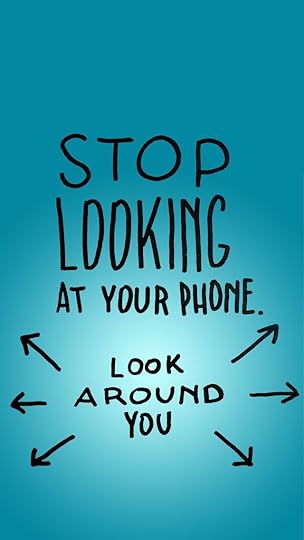
What will your lock screen say? “Focus?” “Count to fifteen?” “Read a book?” “This phone is shiny pink?” The name or photo of someone important to you?
Do it now, then leave a comment below telling me what you changed your lock screen to. (I might include your idea in a book I’m working on.)
4. More Technology…Seriously
Once, I accidentally overdosed on antibiotics. Guess what the doctor prescribed?
MORE ANTIBIOTICS!
Just a different kind. So, I took the right dose and the pain went away.
Similarly, you can use technology to help you beat tech obsession. Different technology. With the right dose. Technology that WASN’T designed with the sole purpose of sucking up every minute of your attention. There are quite a few of these but the following three are my favorites:
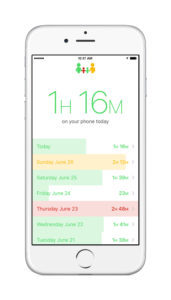 Moment will show you how much time you spend on your phone every day.
Moment will show you how much time you spend on your phone every day.
“If it cannot be measured, it cannot be improved,” sayeth management guru, Peter Drucker. Imagine finding out you that spent five hours per day on your phone? Ten? The first step is realizing you have a problem.
In addition to passively measuring your phone time, Moment can also help you set limits.
This is useful for monitoring your child’s phone use. It won’t turn off your kid’s phone, but it will make a god-awful sound until they do. Closing the app is not enough, they’ve got to shut down the phone.
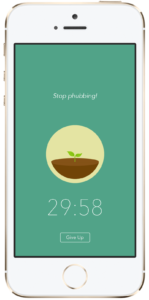 Need more time to focus on work or relationships? Forest offers an interesting solution. This app lets you “plant a tree” that will “die” if you check your phone too soon. But if you can stay away, the sapling will grow into a healthy tree and be added to your forest.
Need more time to focus on work or relationships? Forest offers an interesting solution. This app lets you “plant a tree” that will “die” if you check your phone too soon. But if you can stay away, the sapling will grow into a healthy tree and be added to your forest.
It’s the opposite of those Tamagotchi pets that would die if you neglected them.
This makes staying away from your phone FUN – which is much-needed if it is going to compete with any of the other apps on your phone!
 Space is a free app that includes the “Moments of Zen” feature. Pick the apps that you want space from and Space will make you wait fifteen seconds every time you try to open it. During that time, you’ll likely reconsider the importance of checking that particular app at that particular moment.
Space is a free app that includes the “Moments of Zen” feature. Pick the apps that you want space from and Space will make you wait fifteen seconds every time you try to open it. During that time, you’ll likely reconsider the importance of checking that particular app at that particular moment.
As their homepage says, “You don’t really want to dump Facebook. You just need Space.”
Do you have a way to use your phone less? Comment below and tell me about your idea. (I may use your idea in a book I’m working on.)
The post 4 Strange Ways to Reclaim Your Day (and Your Happiness) from Technology appeared first on GoodAtPeople.com.
4 Strange Ways to Reclaim Your Brain, Your Heart, and Your Day from Technology
Sometimes, parents just don’t understand.
For generations, parents have feared that the latest and greatest gadgets would fry their kids’ brains, ruin their work ethic, or destroy their tiny, fragile moral compasses. Just pick any point in history. Radio, television, video games, and even books have all been accused of corrupting the youth.
I mean…kids today, right?
Well, usually the kids turn out just fine, the newest technology eventually integrates into our lives, and life goes on.
“Every once in a while, a revolutionary product comes along that changes everything.” – Steve Jobs while announcing the iPhone back in 2007.
This time, it really is different.
It’s been over ten years. The research is in. It turns out that Steve Jobs was right. The smart phone has changed everything.
It’s changed our memory, our attention span, our cognitive ability, our relationships, our productivity, our social connections, our sex lives, and much more. And not all for the better.
There’s no question about it. Smart phones have changed our brains, our hearts, and our daily schedules. The digital revolution was supposed to make our lives better, but it instead feels like it is eroding our happiness little by little.
Maybe that’s why Steve Jobs and other titans of the tech industry famously do not allow their own children to have smart phones or tablets. (Never get high on your own supply, right?)
Maybe that’s why more and more people are finding ways to take back control of the technology in their own lives.
Here are five strange ways you can push back at the pull of technology.
1. Buy an Ugly Phone (or an Ugly Case)
When I shattered my last phone on a trampoline, I decided to buy the latest model. Unfortunately, the only color they had in stock was “rose gold” (a euphemism for shiny pink.) It wasn’t ugly. In fact, it was pretty. A little too pretty. Lo and behold, it stayed in my pocket more often.
Get an ugly phone (or case) and you’ll be too embarrassed to take it out in front of people. Here’s a couple of suggestions:



2. Drink Some Beer
Don’t you hate it when you’re out to eat and the person you’re with only has eyes for their phone? There is a bar in Brazil that has solved this problem. They serve their beer in glasses that will only stand upright if perched on top of a cell phone. Have a look:

Weirdest/Awesomest drinking game ever.
3. Use a Lock Screen Reminder
My lock screen is a picture of the back of a receipt on which I wrote the words, “Human Connection.” Every time I reach for my pretty little phone, I’m reminded not to let my device interfere with any relationships right in front of me.
It is said we check our phones over 80 times a day. That’s 80 opportunities to remind ourselves of what is truly important.


What will your lock screen say? “Focus?” “Count to fifteen?” “Read a book?” “This phone is shiny pink?” The name or photo of someone important to you?
Do it now, then leave a comment below telling me what you changed your lock screen to. (I might include your idea in a book I’m working on.)
4. More Technology…Seriously
Once, I accidentally overdosed on antibiotics. Guess what the doctor prescribed?
MORE ANTIBIOTICS!
Just a different kind. So, I took the right dose and the pain went away.
Similarly, you can use technology to help you beat tech obsession. Different technology. With the right dose. Technology that WASN’T designed with the sole purpose of sucking up every minute of your attention. There are quite a few of these but the following three are my favorites:
 Moment will show you how much time you spend on your phone every day.
Moment will show you how much time you spend on your phone every day.
“If it cannot be measured, it cannot be improved,” sayeth management guru, Peter Drucker. Imagine finding out you that spent five hours per day on your phone? Ten? The first step is realizing you have a problem.
In addition to passively measuring your phone time, Moment can also help you set limits.
This is useful for monitoring your child’s phone use. It won’t turn off your kid’s phone, but it will make a god-awful sound until they do. Closing the app is not enough, they’ve got to shut down the phone.
 Need more time to focus on work or relationships? Forest offers an interesting solution. This app lets you “plant a tree” that will “die” if you check your phone too soon. But if you can stay away, the sapling will grow into a healthy tree and be added to your forest.
Need more time to focus on work or relationships? Forest offers an interesting solution. This app lets you “plant a tree” that will “die” if you check your phone too soon. But if you can stay away, the sapling will grow into a healthy tree and be added to your forest.
It’s the opposite of those Tamagotchi pets that would die if you neglected them.
This makes staying away from your phone FUN – which is much-needed if it is going to compete with any of the other apps on your phone!
 Space is an app that was once banned from the App Store because “any app that would encourage people to use other apps or their iPhones less was unacceptable for distribution.” It isn’t free, but it has a number of features based on neuroscience that work together to give you back control.
Space is an app that was once banned from the App Store because “any app that would encourage people to use other apps or their iPhones less was unacceptable for distribution.” It isn’t free, but it has a number of features based on neuroscience that work together to give you back control.
One of my favorites is the “Moments of Zen” feature. Pick the apps that you want space from and Space will make you wait fifteen seconds every time you try to open it. During that time, you’ll likely reconsider.
As their homepage says, “You don’t really want to dump Facebook. You just need Space.”
Do you have a way to use your phone less? Comment below and tell me about your idea. (I may use your idea in a book I’m working on.)
The post 4 Strange Ways to Reclaim Your Brain, Your Heart, and Your Day from Technology appeared first on GoodAtPeople.com.
May 22, 2018
How I Know You Can’t Be Trusted
FACT: You can’t be trusted.
Well, at least your brain can’t.
How do I know? Because we magicians have discovered something long before the neuroscientists have. And the neuroscientists knew it long before the Internet figured it out in a big way this week.
Did you catch any of that Laurel/Yanny nonsense? If not, it’s basically an auditory version of “The Dress”. (You have seen the dress, right?) After I get you up to speed on these two, I’ll show you the newest one that is my absolute favorite.
First, here’s a picture of “The Dress.” Is it black and blue, or is it white and gold?

Answer: According the to manufacturer, it’s blue with black lace. (Personally, I see white and gold, clear as day. See? I can’t be trusted either.)
Next, here’s the audio clip that caused much weeping, wailing, and gnashing of teeth this week. Does it say “Laurel” or does it say “Yanny”?
Answer: It actually says this:

Once again…ambiguity all around.
Now here’s a Facebook Live video where I use the very cool “McGurk Effect” to help you hear “Laurel.”
Finally, and my FAVORITE, is this little piece of brain-meltery:
Does it say “Brainstorm” or “Green Needle?”
Answer: You get to pick! Whichever one you think will be the one that you hear! You can even make yourself hear “Brain Needle” or “Green Storm.” How crazy is that???
Look, there’s no way around it. Your perception is a bit wonky. It’s bass-ackwards.
Here’s the big secret: seeing isn’t believing.
Believing is seeing.
So cut yourself some slack this week WHEN you make a mistake. And feel free to admit it. Just explain to everyone that you have a brain condition called “disambiguous perceptivity.” Sure, I made it up, but it sounds good. (At least, I THINK it sounds good.)
What do you see/hear? Comment below and let me know!
The post How I Know You Can’t Be Trusted appeared first on GoodAtPeople.com.
May 15, 2018
Google Just Unveiled an Awesome (and Terrifying) New Technology
Remember the first time a computer (Deep Blue) beat the world’s best chess player (Garry Kasparov) back in 1997?
Or how about when IBM’s Watson badly beat Jeopardy’s best champions in 2011?
Well, this week another tally has been added to the robot column. With the newest addition to Google Assistant, dubbed “Duplex,” Google aced the never-before-passed Turing Test. It’s a pretty cool piece of technology…and it’s also kinda terrifying.
During the demonstration, Google Assistant made a phone call and booked an appointment at a hair salon. It has become the call heard ’round the world because it sounded exactly like a conversation between two humans (only more articulate.) The robot even threw in a few “ums” and “ahs” as it responded perfectly to the human’s questions and social nuances.
What’s so scary about that? It sounds amazing.
First of all, if you think you get a lot of calls and voicemails from telemarketers now, get ready for a whole lot more. This technology is scalable to infinity and robots don’t sleep.
If you work in a call center, you can pretty much kiss your job goodbye. Why bother going through the time and expense of training employees when you could just re-program them instead? Just add “conversation” to the list of things robots do better than humans.
Is any job safe? It’s only a matter of time before robots are selling cars, leading organizations, or creating art. How far away are we from robots being able to replace you entirely? How can you compete with something that improves on all of your strengths and eliminates all of your weaknesses? Just ask David Levy, the author of Love and Sex with Robots. He believes that by the year 2050, your spouse will even prefer a robot partner to you. (After the robot rights movement legalizes human-robot marriages, of course.)
And Duplex kind of blows open Pandora’s Box for the world of cyber-crime, doesn’t it? Criminals will be able to make anybody’s voice call anyone and say anything. Combine that with this technology and we’ll never be able to trust our own eyes or ears again. Just imagine Brad Pitt calling your Aunt Edna and asking for a personal favor. He could get her to do anything.
Or maybe the criminals could someday use a super-intelligent robot to impersonate your voice and communication style perfectly. “Hey babe, I’m stuck and I need you to make a bank transfer for me.”
Has technology gone too far? If so, can the genie ever be put back into the bottle?
Worst of all, in my opinion, is the blow suffered to human connection. It’s yet another person-to-person interaction that has been removed and replaced with a screen or an app. If we keep doing this, our human-to-human skills will atrophy even more than they already have. Technology continues to bring far people close and close people far. The quantity of connectivity goes up, but the quality of connection comes down.
“A house divided against itself cannot stand.”
Duplex is helpful if you’re at work and can’t book your own appointments during normal business hours; but it’s harmful if people start using this technology to make ALL of their phone calls. What if we get so bad at interacting that we choose not to even bother? “Okay Google, call Lorraine and tell her she’s fired.” “Okay Google, call Jim and give him my condolences on the loss of his mother.” What if we lose the one thing that makes life worth living?
What if it’s already happening?
(For some comic relief, here are some spoof videos that simulate what would happen if Duplex were used to break up with a girlfriend for you or ask your parents for money.)
What do you think? Will this kind of technology just be an annoyance, polluting the phone lines? Or will it become a threat to job security, personal security, or even National Security? Pop your comments below – then go have a REAL CONVERSATION WITH A REAL PERSON ABOUT IT.
The post Google Just Unveiled an Awesome (and Terrifying) New Technology appeared first on GoodAtPeople.com.
April 24, 2018
I Peed Myself a Little – Two Life Lessons from Tim David
Okay, this story is going to take a little bit of set-up.
It was 3am and time for me to head down to the lobby for my Uber ride to the airport.
I’m going to need some coffee. LOTS of coffee.
My driver was a great conversationalist, but she didn’t exactly know how to get to the airport terminal – even with both of our GPS’s barking orders left and right.
Long story short, I’m two cups of coffee in and stuck in an Uber for 45 minutes.
When we finally found the Delta terminal, I grabbed my bags and bolted.
But before I could even make it to the doors, I was hit with a sense of panic.
I forgot my phone.
I had rushed out before I remembered to take it off the charger.
I turned around just in time to see her pulling away.
I know I must have looked foolish sprinting after her and waving my arms, but I didn’t care. My boarding pass was on that phone. Not to mention my family photos, writing ideas, and Clash of Clans video game (Hog RIDERS!)
It was no use. Her car was faster than me (and it had far more gas in the tank.)
Gasping for breath, I looked across the parking lot and saw the airport exit. I sprinted towards that, knowing that she had to go the long way around. “This is what I train for,” I thought.
I ran (still carrying my bags) and watched her distant tail lights get closer and closer to the even-more-distant exit.
That’s when the pee came out.
Listen, it was only a little bit. Not enough to run down my leg or anything. Just enough to leave that tell-tale dark spot on my trousers.
Walk. Of. Shame.
Fortunately, I had a sweatshirt that I could pull down.
A sweatshirt that they made me take off at security.
Then, they made me put my hands high over my head while in the body scanner.
There was absolutely no hiding it anymore.
Especially because the scanner interpreted the dark spot as a potential chemical weapon.
What a great time for my first pat-down party with the TSA.
It reminds me of a line from my speech, “Get ready. I’m going to touch you…”
Someday, I’ll laugh about this. Maybe if my phone ever arrives in the mail.
There are two important lessons from this story (besides the obvious.) First…
1. BE VULNERABLE
I just admitted to tens of thousands of people that I peed myself.
As a professional, aren’t I supposed to have it all together?
NO!
In addition to being a professional, you’re also a human being. When you aren’t afraid to show your human side, you become more relatable, more likable, and yes…more influential.
Scientists call this the Pratfall Effect. I call it the power of good old-fashioned authenticity. In an age of digitally-doctored images and picture-perfect social media profiles, authenticity is so important – and yet so lacking.
The second life-lesson from all of this was a bit unexpected.
2. LOSE YOUR PHONE
Seriously. Try it. Just for a few days.
Without my phone I have been incredibly focused, calm, productive, and – perhaps most importantly – PRESENT with the people I love.
That’s why part of me was happy to see an empty mailbox this morning.
I’m going to begin the habit of taking a digital sabbath. No phone for one day out of every week. I’ll write, read, reconnect with nature, meditate, exercise, and spend face time with my family.
I have good news, I’m on day three and not only am I still alive, I actually feel it.
The post I Peed Myself a Little – Two Life Lessons from Tim David appeared first on GoodAtPeople.com.

